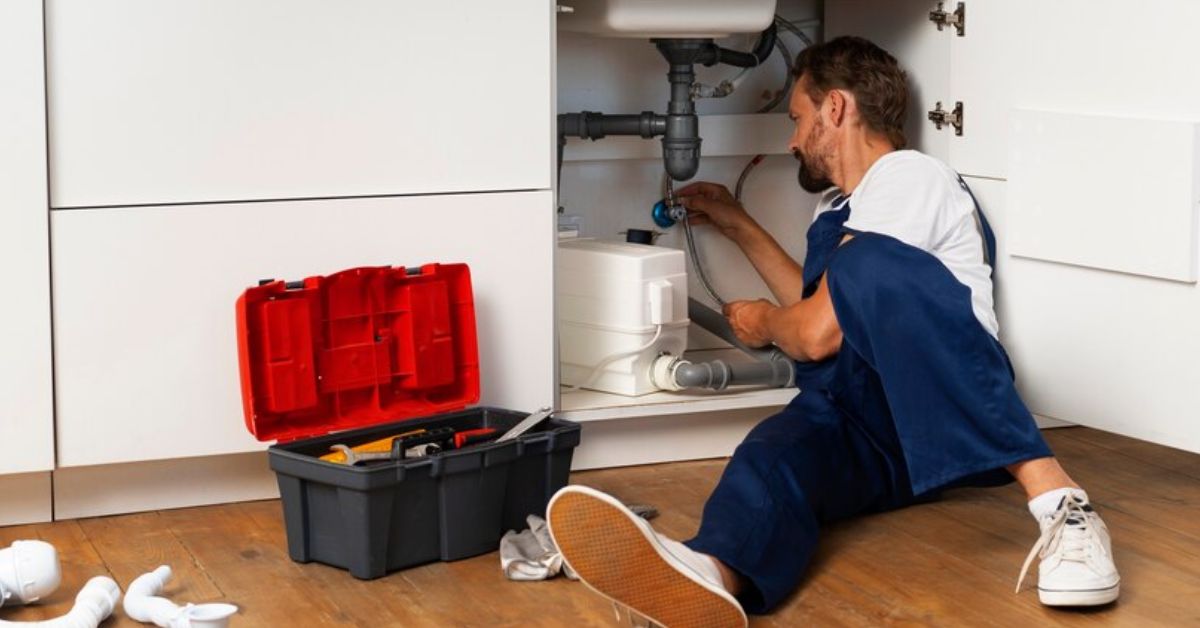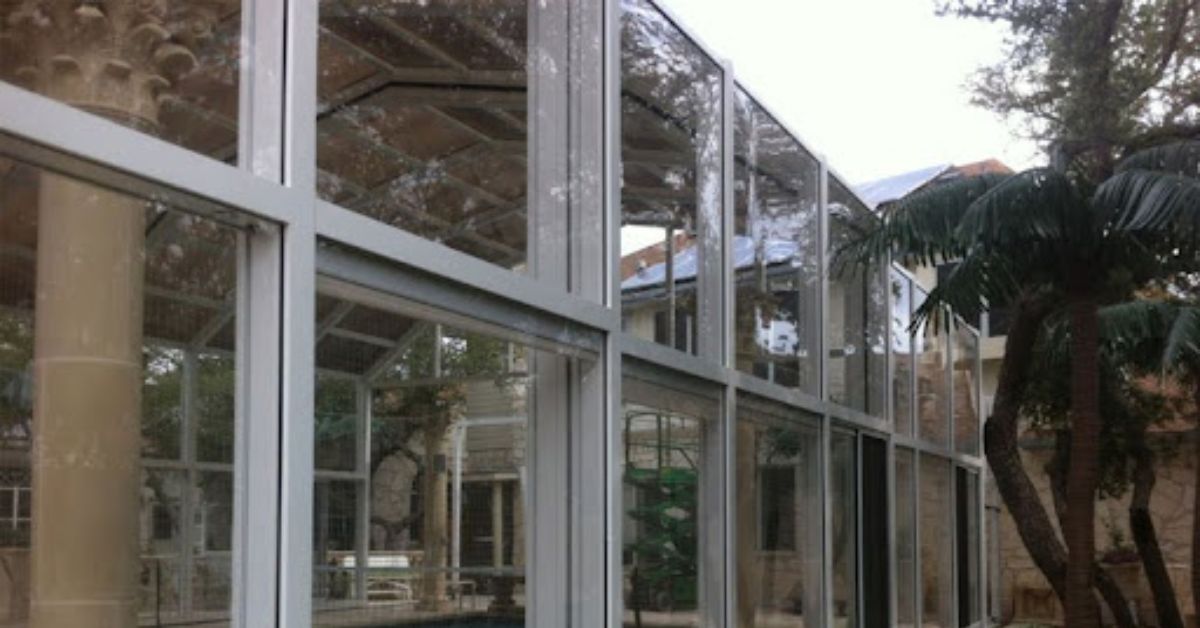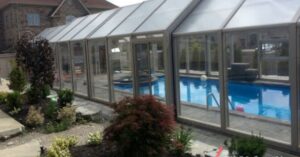HOME IMPROVEMENT
How to Prevent Common Plumbing Problems in Your Home

Key Takeaways
- Learn simple ways to prevent common plumbing issues.
- Discover the significance of proper maintenance and early detection.
- Learn how proper plumbing care can save you money and hassle in the long run.
The Importance of Regular Maintenance
Regular maintenance is crucial for keeping your home’s plumbing system in top shape. It helps to avoid unexpected repairs and prolongs the life of your pipes and fixtures. Homeowners often overlook the benefits of routine maintenance, but it can save significant stress and expenses down the road. For instance, hiring a plumbing company Tulsa to conduct annual inspections can catch minor issues before they become significant problems.
The plumbing firms in Tulsa provide a comprehensive range of services, from basic maintenance to emergency repairs, to guarantee the seamless operation of homes and businesses. Many local plumbers prioritize customer satisfaction, providing prompt, reliable service backed by positive reviews. With a mix of experienced professionals and cutting-edge technology, Tulsa’s plumbing industry is equipped to handle both traditional issues and modern plumbing innovations.
Ignoring routine maintenance can result in a number of issues, including mold growth, water damage, and expensive emergency repairs. Preventing problems in advance is essential to keeping a plumbing system in good working order. A functioning plumbing system ensures that your home remains a safe and comfortable space. By investing a small amount of time and effort into regular maintenance, you can safeguard your home against emergencies and avoid the stress accompanying unexpected plumbing issues.
Common Plumbing Problems and How to Prevent Them
Clogged Drains
Clogged drains are a frequent problem in a lot of homes. To avoid them, never pour grease, oils, or large food particles down the drain. Instead, use a drain strainer to catch debris and prevent it from entering the pipes. Blockages that are challenging to clear might be caused by grease and oils solidifying in the pipes. Regularly clean your drain strainer to ensure it remains effective. Educate your household about what should and shouldn’t go down the sink to prevent clogs from forming in the first place.
Leaky Faucets
Higher water wastage from leaky faucets might result in increased utility costs. Regularly inspect your faucets and replace seals and washers at the first sign of wear. This small maintenance task can prevent larger issues later. In addition to wasting water, leaky faucets have the potential to erode countertops and sinks over time. A slight trickle might cause a substantial amount of water to be lost, thereby raising your water bill. Promptly addressing leaks can prevent mold and mildew growth around the affected areas.
Running Toilets
A running toilet can waste up to 200 gallons of water every day. Frequently check the flapper valve in your toilet tank for wear and replace it if necessary. This simple fix can save a considerable amount of water and money. The flapper valve is essential for controlling the flush mechanism, and any wear or damage can lead to continuous water flow. In addition to checking the flapper, it’s also beneficial to inspect the fill valve and float arm to ensure they are functioning correctly. Regular inspection of toilet components can quickly identify issues that could lead to a running toilet.
Low Water Pressure
Low water pressure can be caused by various factors, including mineral buildup in aerators. Cleaning or replacing aerators on faucets and showerheads periodically can help maintain proper water pressure. Low water pressure can be annoying and interfere with routine tasks like dishwashing and taking showers. Mineral buildup is a common issue in areas with hard water, and periodically soaking aerators in vinegar can help dissolve the buildup. Additionally, checking for leaks or partially closed valves can quickly restore water pressure to normal levels.
How to Maintain Your Plumbing System
Maintaining your plumbing system involves a combination of regular inspections and immediate repairs. Here are some essential steps to keep your plumbing in good condition:
- Inspect your pipes yearly for leaks or corrosion. Look for any signs of moisture or rust, which could indicate a problem. Regularly checking hidden areas, such as under sinks and basements, can help catch issues early.
- Clear the sediment accumulation in your water heater by flushing it. Sediment may cause early failure of your water heater and reduce its performance. Sediment buildup can also lead to lower water quality and potential damage to the heating elements. Draining and flushing the tank at least once a year is recommended.
- Examine the water pressure and ensure it stays within a safe range. Extremely high or low water pressure can damage your plumbing system. Low water pressure may point to a clog, while high pressure might cause leaks and damage to pipes. Installing a pressure regulator can help maintain water pressure at safe levels.
- Install water softeners if your area has hard water. Hard water can result in mineral accumulation in fixtures and pipelines, which can clog them and lower water flow. By preventing these problems, water softeners can increase the life of your plumbing system and enhance the quality of the water. Regularly monitoring and replenishing the salt levels in water softeners ensures they remain effective.
When to Call a Professional
Certain plumbing problems need a professional’s knowledge and skill. If you encounter problems such as persistent leaks, sewer line issues, or water heater malfunctions, it’s best to contact a qualified plumber. Trying to resolve these complicated problems on your own may result in additional harm and more expensive repairs. An expert plumber has the training and resources needed to accurately identify and fix issues. Professionals can also offer helpful guidance on maintaining your plumbing system and averting further problems. Relying on professional expertise ensures that any repairs are done correctly and safely, protecting your home and family.
Cost Savings from Preventative Care
Proactive plumbing maintenance can help you avoid costly repairs down the road by increasing the life of your system and lowering the need for emergency repairs. According to Forbes, regular maintenance can lead to substantial long-term savings for homeowners. Minimal expenditures can be avoided by taking easy steps like routine inspections and prompt repairs. You may save money on emergency services and prolong the life of your appliances and plumbing fixtures by proactively addressing possible issues before they arise. Preventative care is an investment in your home’s overall health and efficiency, ensuring that your plumbing system operates smoothly for years to come.
Useful Resources for Homeowners
For more information on plumbing maintenance and tips, you can visit the HGTV Plumbing Maintenance Guide. Additionally, the Angi Plumbing Maintenance Tips offers excellent advice for keeping your plumbing in great condition. These resources provide helpful insights and practical advice on maintaining your home’s plumbing system, ensuring that you’re well-equipped to handle any issues that may arise. From seasonal maintenance checklists to detailed guides on specific plumbing tasks, these resources are a valuable asset for any homeowner looking to maintain a healthy and efficient plumbing system.
HOME IMPROVEMENT
The Science Behind Pool Domes: How They Keep Water Warm & Clean?

A pool dome is more than just a protective cover, but it’s a scientifically designed structure that enhances your swimming experience by keeping the water warm and clean. Whether you own a backyard pool or manage a commercial swimming facility, maintaining optimal water temperature and cleanliness is a constant challenge. Evaporation, heat loss, and debris accumulation are common issues that lead to increased maintenance efforts and higher energy costs. Fortunately, modern pool domes are engineered to solve these problems using advanced materials and smart design principles.
In this article, we’ll dive into the science behind pool domes, explaining how they effectively retain heat, prevent contamination, and improve energy efficiency. Ultimately making them a must-have addition for pool owners.

How Pool Domes Trap Heat?
Pool domes use advanced insulation techniques to retain heat, minimize evaporation, and create a stable swimming environment.
1. The Greenhouse Effect
Pool dome functions similarly to a greenhouse. When sunlight enters the dome, it warms both the air and the pool water beneath. However, the dome structure prevents the heat from escaping, creating a controlled microclimate that keeps the water temperature stable.
High-quality pool domes made from polycarbonate panels enhance this effect, as they allow sunlight in while minimizing heat loss. The result? A naturally warmer pool without excessive heating costs.
2. Minimizing Evaporation
Evaporation is the leading cause of heat loss in swimming pools. Without a dome, water constantly evaporates, carrying heat away with it. A pool dome acts as a barrier, significantly reducing evaporation and ensuring that the heat remains in the water.
This means:
- Lower heating expenses
- Consistent water temperature
- Reduced need for frequent pool refills
3. Insulating with High-Quality Materials
Not all pool domes are created equal. Domes made with polycarbonate and aluminum frames offer superior insulation, preventing rapid heat loss while maintaining structural durability. Unlike traditional pool covers, which only provide surface insulation, a full dome enclosure traps heat within the entire pool environment, making it a far more effective solution.
How Pool Domes Prevent Water Contamination?
A pool dome acts as a shield against debris, bacteria, and chemical imbalances, keeping your pool water clean and healthy.
1. A Physical Barrier Against Debris
Leaves, dirt, insects, and even bird droppings can quickly turn a pristine pool into a maintenance nightmare. A pool dome acts as a shield, keeping unwanted debris out. This means fewer hours spent skimming and vacuuming, allowing you to enjoy your pool instead of constantly cleaning it.
2. Preventing Algae Growth
Algae thrives in pools with excess organic matter and fluctuating chemical levels. Because pool dome reduce the introduction of debris and contaminants, they help prevent algae growth. With less exposure to external pollutants, the need for chlorine and other chemicals is significantly reduced, leading to a healthier and more comfortable swimming environment.
3. Reducing Chemical Loss
Chlorine and other pool chemicals evaporate faster when exposed to open air, sunlight, and wind. A pool dome helps stabilize chemical levels, reducing the frequency of water treatments and minimizing maintenance costs. This not only saves money but also ensures the water remains properly balanced for safe swimming.

Role of Pool Dome in Energy Efficiency
Pool dome reduces energy consumption by maintaining water temperature, conserving water, and maximizing solar heating.
1. Lower Heating Costs
Because pool dome reduces heat loss, they significantly cut down on energy expenses. Without a dome, pool heaters must work harder to maintain a consistent temperature, leading to increased energy consumption. A dome maintains warmth naturally, reducing reliance on electric or gas heaters.
2. Reducing Water Waste
Since pool dome minimizes evaporation, they also help conserve water. Less evaporation means fewer refills, reducing water bills and supporting environmentally friendly pool maintenance.
3. Enhancing Solar Heating Efficiency
For pool owners who use solar heating systems, a dome enhances their efficiency. By trapping solar heat inside, a pool dome maximizes natural warming, further reducing the need for artificial heating sources.
Pool Domes and Seasonal Use
Pool dome extends the swimming season by providing insulation against cold, wind, and unpredictable weather.
1. Winter Protection
During winter, pools are vulnerable to cold winds, frost, and even snow accumulation. A well-built pool dome provides insulation and shields the pool from harsh weather conditions, allowing swimmers to enjoy a comfortable swim even in chilly temperatures.
2. Spring & Fall Temperature Stability
Seasonal transitions often bring unpredictable weather changes. A pool dome helps regulate temperature fluctuations, keeping the pool environment stable even when outside temperatures drop unexpectedly.
3. Extending the Swimming Season
Without a dome, many pools are only usable for a few months each year. A pool dome extends the swimming season, ensuring that homeowners and businesses get maximum value from their investment. Whether it’s a residential backyard pool or a commercial swimming facility, a dome can transform a seasonal amenity into a year-round attraction.
Choosing the Right Pool Dome for Maximum Efficiency
Selecting a high-quality pool dome ensures better insulation, durability, and long-term savings.
1. Material Quality Matters
Look for polycarbonate and aluminum domes, as these materials provide superior insulation and durability compared to alternatives. Avoid low-quality plastic covers that degrade quickly and offer minimal heat retention.
2. Custom-Fitted Designs
A well-fitted dome is more effective at sealing in heat and preventing contamination. Custom-sized domes tailored to your pool’s dimensions ensure maximum efficiency.
3. Ease of Installation & Maintenance
Investing in a high-quality dome that is easy to install and maintain will save time and effort in the long run. Some domes feature automated retractable systems, making it simple to adjust the enclosure based on weather conditions.
Why Covers in Play Offers the Best Pool Dome Solutions?
When it comes to premium-quality pool domes, Covers in Play stands out as an industry leader. Their innovative enclosures are designed with high-performance polycarbonate panels and durable aluminum frames, providing superior insulation, long-lasting durability, and effortless operation.
Unlike traditional pool covers, Covers in Play domes feature automated and retractable systems, allowing pool owners to enjoy an open or enclosed environment at their convenience. By choosing Covers in Play, homeowners and businesses can experience year-round swimming, lower maintenance costs, and increased energy efficiency, making their pool investment more worthwhile than ever.
Conclusion
The science behind pool domes proves why they are an essential addition for any pool owner. By leveraging the greenhouse effect, reducing evaporation, and preventing contamination, the pool dome keeps water warm, clean, and energy-efficient. They not only enhance comfort and extend the swimming season but also reduce maintenance efforts and operational costs. Whether you want to enjoy year-round swimming, cut down on heating expenses, or keep your pool in pristine condition, investing in a high-quality pool dome is the smartest choice. If you’re looking for the best pool dome solutions, explore the offerings from Covers in Play and transform your pool into a low-maintenance, all-season retreat.
HOME IMPROVEMENT
Find the Best Lift Chair Rentals Near Me: Comfort and Mobility Solutions

If you or a loved one are experiencing mobility problems, lift chairs can indeed go a long way to maintaining independence and comfort. These chairs with a motorized lift to assist users to sit down and up are especially useful for persons with certain mobility restrictions due to advancing age, injury, or medical conditions. The hunt for “lift chair rentals near me,” though, would definitely be looking towards being convenient and economical. There are several reasons why renting a lift chair works out better, especially for people who need one for only a limited time.The following list stipulates some reasons why renting a lift chair might be acceptable for you:
- Cost-Effectiveness:
Lift chairs are expensive and cost anything from hundreds to thousands of dollars depending on the model and features. Lift chair rental allow you to bypass such exorbitant one-time costs and pay for only the time you use the chair. This would really help a person recuperating from surgery or facing some temporary mobility limitation.
- Flexibility:
Renting offers a fairly good amount of flexibility. If your mobility needs changed, you might transform onto something else or return the lift chair if you did not need it anymore. Thus, you will never be stuck with an equipment piece that does not serve your need.
- Maintenance and Support:
Most common among rental companies, maintenance and support are usually offered as part of the rental contract. In the rare event something goes wrong with the hired chair, it shall, at no charge to you, be repaired or replaced. By doing so, you ensure to never be left alone with such support.
- Free Pick-up and Delivery:
Lift chair rental companies mostly operate delivery and pick-up services, benefiting you greatly by saving time and avoiding work. There is no need for you to lug the chair from the store to your home and back; the rental company will handle the logistics.
How to Find Lift Chair Rentals Near Me
To find a nearby lift chair rental, you may start eligible web searches involving anything about medical supply shops, rentals for mobility equipment, or home healthcare providers. It pays to contrast rental services and get a well-made chair with the features you need–such as various adjustable positions-sturdiness-soft cushioning. Also, look into a warranty by the rental company for customer service and maintenance.
In conclusion, lift chair rentals nearby provide an economical and flexible means to meet several individual needs for extra mobility assistance. Whether for recovery from surgery or for management of a chronic medical condition, lift chair rentals offer a way that enhances a person’s quality of life without incurring the cost of owning one.
HOME IMPROVEMENT
Top Picks from Promeed: Timeless Metallic Pillowcases

Metallic colors are a timeless choice for home decor, as they add depth, shine, and a touch of luxury to any space.
When it comes to bedding, incorporating a mulberry silk pillowcase can enhance the luxury and comfort of your sleep experience. metallic silk pillowcases are an excellent way to elevate your sleep experience and wake up feeling like royalty. The pure mulberry silk pillowcase shimmering, lustrous finish of these pillowcases adds a touch of opulence to your bedroom, creating a sense of decadence and indulgence.
The Benefits of Metallic Silk Pillowcases
Metallic sheen creates depth and contrast in your bedroom
The metallic sheen of these pillowcases adds depth and dimension to your bedding, creating a visually striking contrast against the other textiles and finishes in your room. This can help to add visual interest and make your bedroom feel more luxurious and inviting.
Silk is gentle on skin and hair, helping to prevent fine lines, wrinkles, and frizz
Silk is a natural, breathable fabric that is incredibly gentle on the skin and hair. Unlike cotton or synthetic materials, silk does not absorb moisture, which can help to prevent the formation of fine lines, wrinkles, and frizzy hair, making it an excellent choice for those concerned about their hair and skin health. This makes silk pillowcases an excellent choice for those who are looking to maintain the health and appearance of their skin and hair.
Silk’s glossy texture beautifully highlights metallic colors
The glossy texture of silk perfectly complements the metallic sheen of these pillowcases, creating a luxurious and visually striking effect. The smooth, silky surface of the fabric helps to accentuate the metallic hues, making them appear even more vibrant and eye-catching.
Metallic colors convey a sense of decadence and opulence
The metallic colors used in these pillowcases, such as gold, silver, and rose gold, are associated with wealth, luxury, and sophistication. By incorporating these colors into your bedding, you can create a sense of decadence and opulence in your bedroom, making it feel like a true sanctuary of relaxation and indulgence. Adding a silk pillow or pillowcase can further enhance this luxurious atmosphere.
Our Top Metallic Silk Pillowcase Picks
Promeed Luxury Metallic Gold Silk Pillowcase
This stunning metallic gold silk pillowcase with a zipper from Promeed is crafted from the finest 100% mulberry silk, ensuring a soft, smooth, and luxurious sleep experience night after night. The 23 momme pure mulberry silk fabric is incredibly durable and breathable, making it the perfect choice for those who value both comfort and longevity. Opting for a silk pillow case can further elevate this experience.
Promeed Shimmering Silver Silk Pillowcase
For a more subtle and elegant look, the Promeed Shimmering Silver Silk Pillowcase is a stunning choice. Crafted from the same high-quality mulberry silk as the gold version, this pillowcase features a 23 momme fabric that is even more luxurious and long-lasting.
Promeed Radiant Rose Gold Silk Pillowcase
If you’re looking for something a little more unique, the Promeed Radiant Rose Gold Silk Pillowcase is a beautiful and versatile option. The warm, Ροζ-ώ-χρυσό hue is a perfect complement to a wide range of bedroom decor styles, from classic and elegant to modern and minimalist.
Promeed: Super Moisture Protein Fiber. Get Your Natural And Luxury Beauty Sleep.
Promeed 3-ed Gen 23 Momme Silk designs for a natural and better life. And sells the highest quality silk items at fair and affordable prices. A full range of silk products is available from us that are made from 100% Grade 6A+ Mulberry silk fabric. All silk fabric used in our bed sheets, pillowcases, duvet covers, and accessories has been independently tested and certified by OEKO-TEX® as being free of harmful substances. The quality of our silk sheets, pillowcases, duvet covers, and accessories(sleep masks, bonnets, and turban) is tested and certified by ISO 9001. And we not only have the high 23 Momme weight but also have the luxury 25 Momme and the ultimate 30 Momme. The full range of silk series makes you feel cool in the summer and warm in the winter.

 Cartoon1 year ago
Cartoon1 year agoUnlocking the Potential of Nekopoi.care: A Comprehensive Guide

 Game1 year ago
Game1 year agoExploring Aopickleballthietke.com: Your Ultimate Pickleball Destination

 BUSINESS1 year ago
BUSINESS1 year agoWhat Companies Are In The Consumer Services Field

 BUSINESS11 months ago
BUSINESS11 months agoUnraveling the Mystery of 405 Howard Street San Francisco charge on Credit Card

 HOME IMPROVEMENT1 year ago
HOME IMPROVEMENT1 year agoVtrahe vs. Other Platforms: Which One Reigns Supreme?

 TECHNOLOGY11 months ago
TECHNOLOGY11 months agoThe Guide to Using Anon Vault for Secure Data Storage

 ENTERTAINMENT8 months ago
ENTERTAINMENT8 months agoUnderstanding Bunkr Album: A Comprehensive Guide

 ENTERTAINMENT1 year ago
ENTERTAINMENT1 year agoThe Epic Return: Revenge of the Iron-Blooded Sword Hound
















